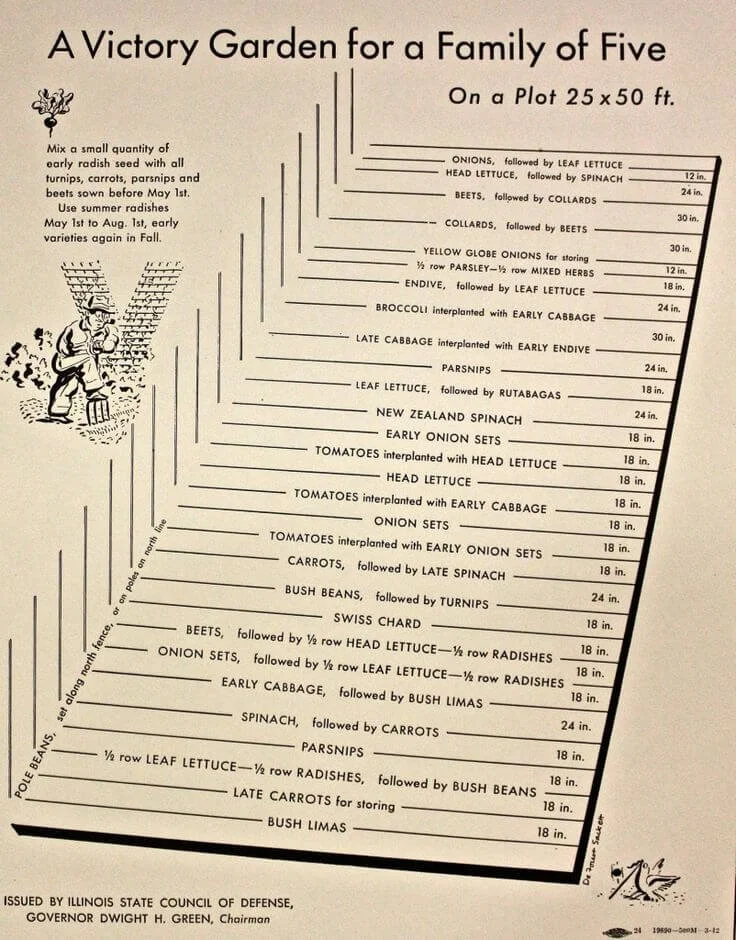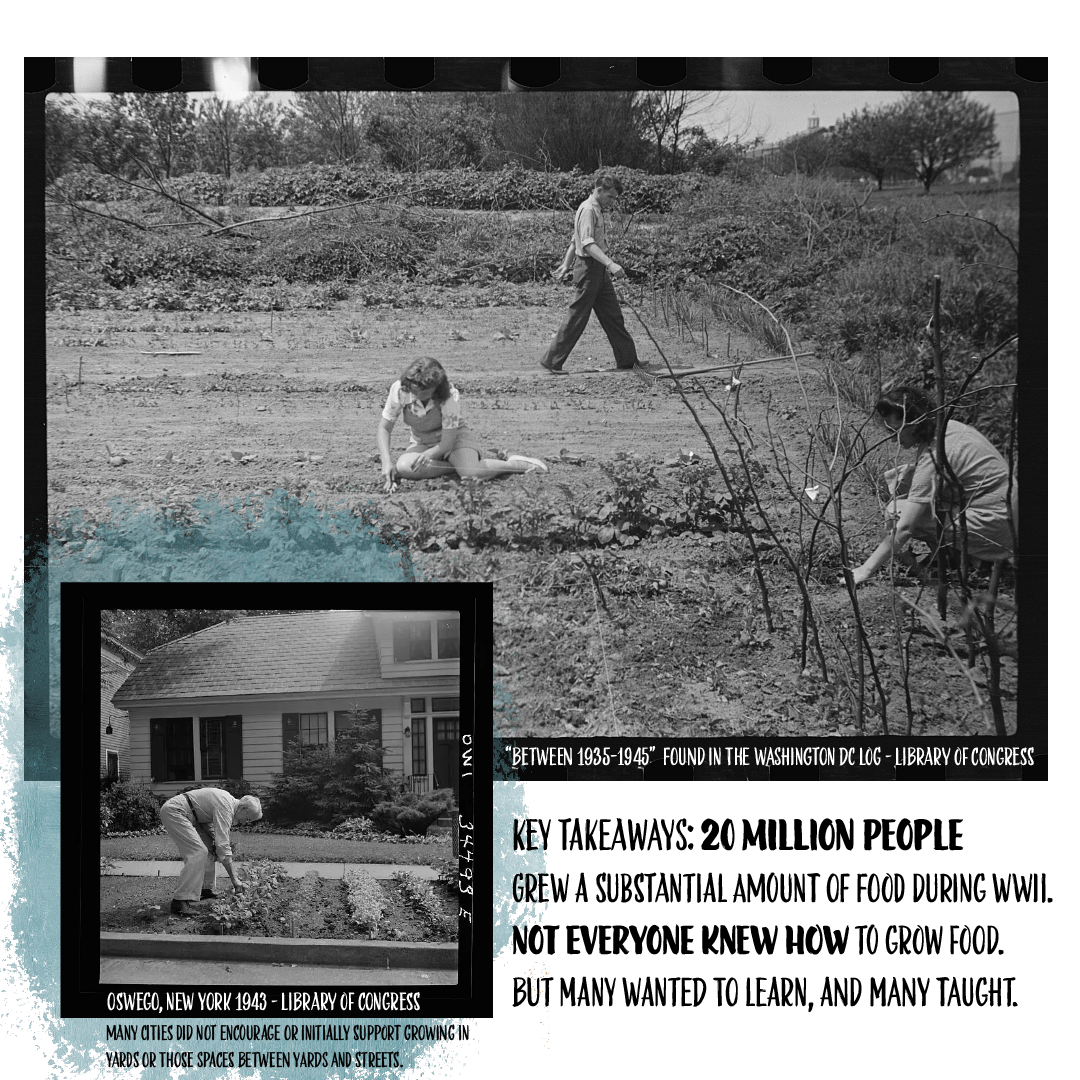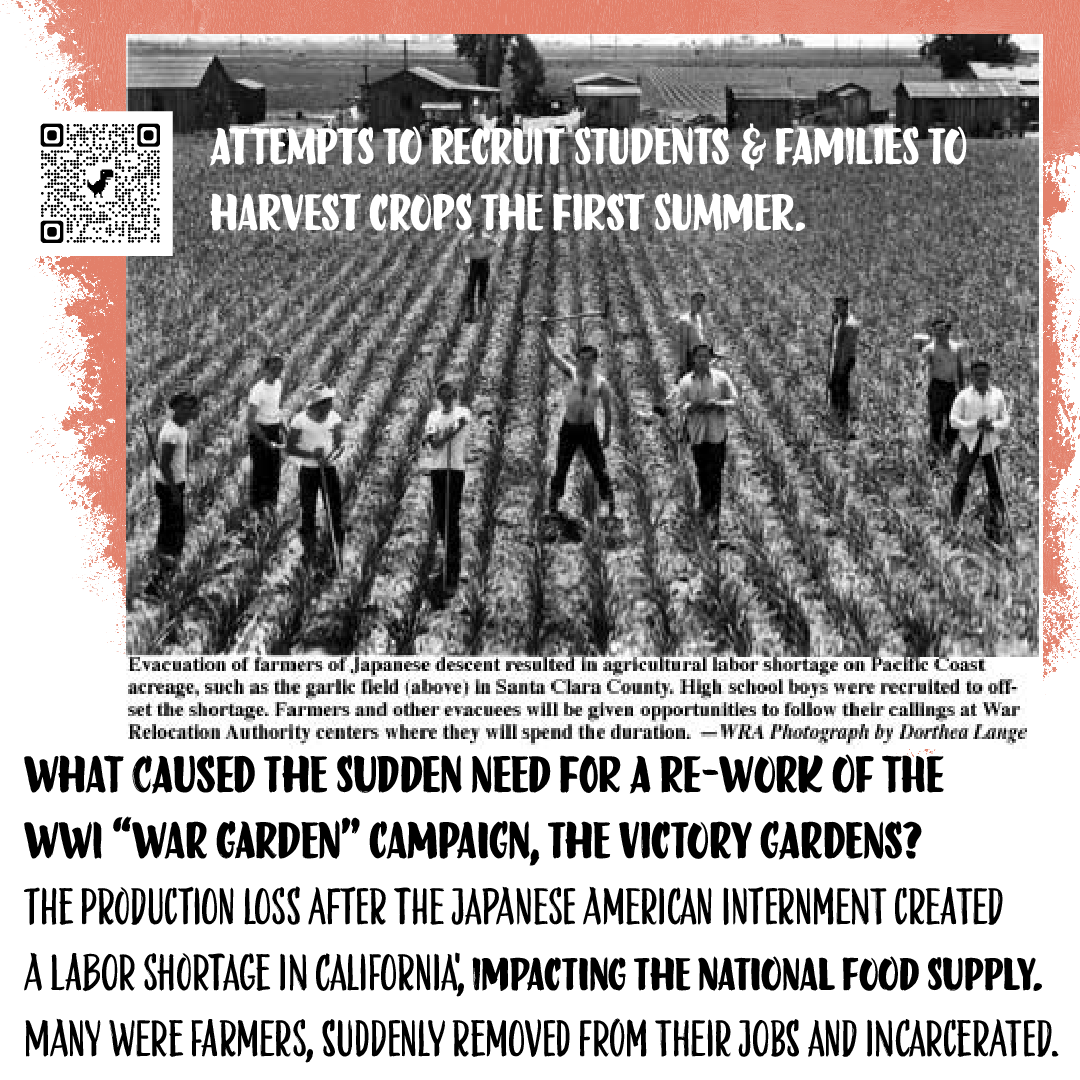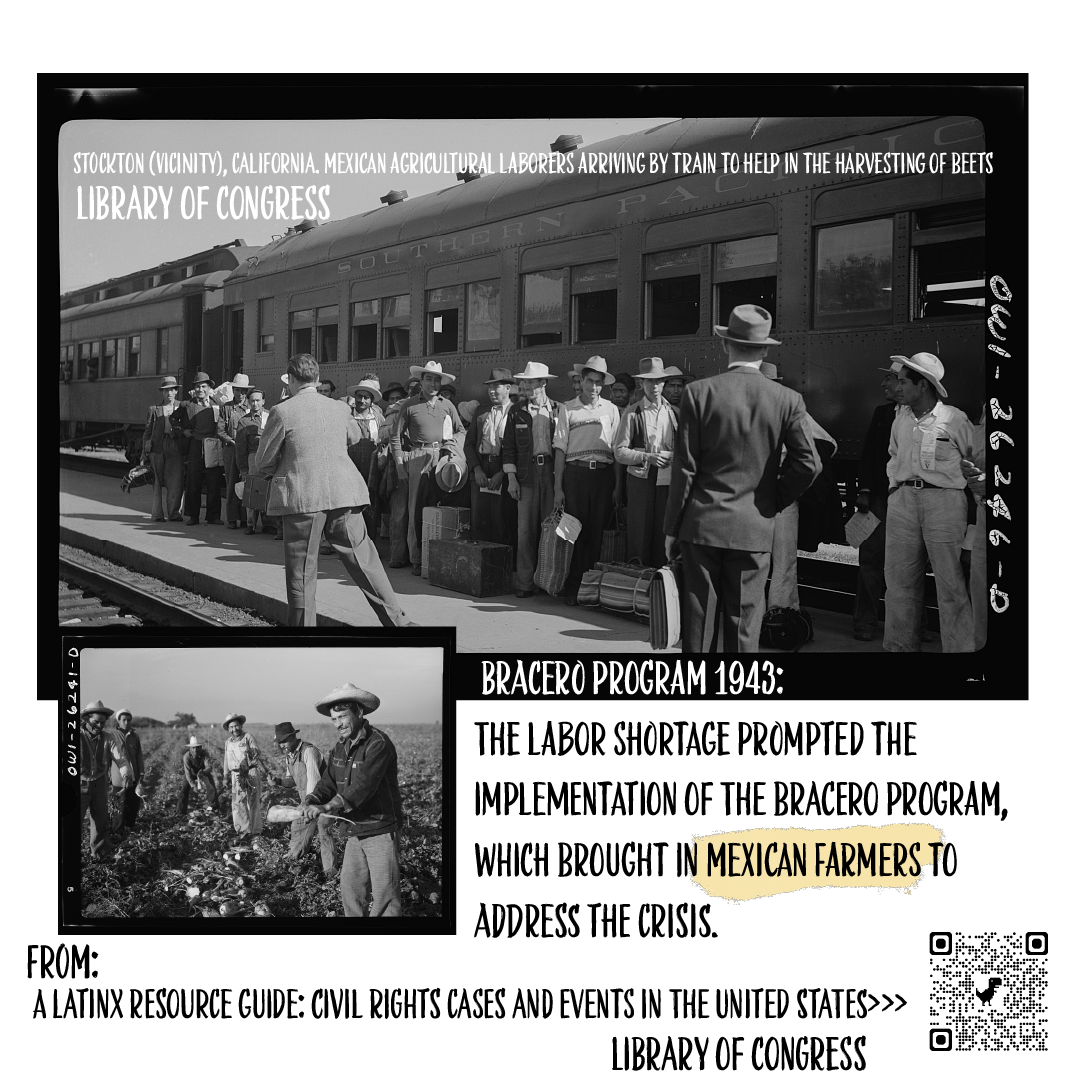Victory Gardens
Both Inspiring & Worth Learning More About
During World War II, Victory Gardens were an incredible act of collective resilience, with an estimated 20 million gardens providing nearly 40% of the country’s fresh produce. That time in our collective history was an incredible example of people working together to share garden space and take care of both households, and communities more broadly. The movement gave people a sense of purpose and connection, reinforcing the lasting truth, that growing food is growing resilience.
When we first started our network—originally linking 43 gardens throughout the Treasure Valley—we saw ourselves in this tradition. We, too, believed in the power of gardening to nurture not only people but also relationships, knowledge, and shared stewardship of land.
A Victory Garden for a Family of Five - Issued by Illinois State Council of Defense Gov. Dwight H. Green Chairman. One of many great plans developed during the era to help people grow productive gardens.
But as we deepened our work, we also learned more about the broader historical context of the 1940s. Victory Gardens flourished alongside wartime rationing, economic shifts, and systemic inequalities. When this nation made drastic decisions, there were widespread impacts.
These parts of history are viewable now, many of the links leading to the Library of Congress, but others leading to articles that tell multiple lived perspectives of history, and it’d be worth reading them.
The big takeaway is that the supported effort to produce our own food was incredibly successful, a shining example of what could be possible. Not a new concept by any means. Just one that’s been supplanted for many generations, creating a sense of convenience for some at the cruel set of costs to others.
Update 3/22/25: House passes bill to eliminate services for undocumented immigrants - creating more barriers to basic care and directly impacting our community, collectively.
From the Idaho Press:
BOISE — A bill that would eliminate non-emergency health care services and other welfare benefits for undocumented people has passed the Idaho House.
QR 1 - Born Free And Equal - Ansel Adams Gallery
QR 2 - ISU Graduate Student Studies Food History at World War II Internment Camp Located 121 Miles from ISU - Idaho State University
QR 1 - Victory Gardens on the World War II Home Front- National Park Service
QR 2 - Victory Gardens, and Alternative Uses for the Disused Lot Wild Lot Press
It would be amazing if that kind of collective energy happened again - Victory Gardens, but maybe by different names, and consciously inclusive of all people.
What needs would that address? How many concerns could be alleviated? And if, this time, perhaps like it was in some places in the 40s, it included all community members—that would be something. That would feel amazing for so many.
Abundant food + amazing meals to share + greater health + increased sense of well being + soil health + carbon sequestration + water use for something that feeds people and pollinators + emissions reduction through reduced need for food transportation and intermediary storage + community building + home-by-home security creating.





